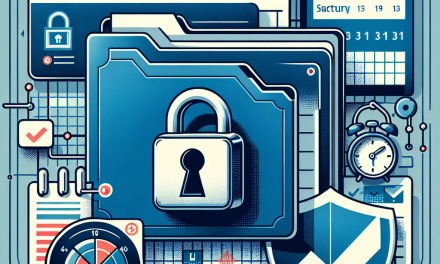In today’s digital world, security and privacy are paramount. Whether you’re managing sensitive data, encrypting communications, or ensuring the integrity of your software packages, GnuPG (GPG) offers a powerful solution. This article will walk you through the process of setting up GPG keys on your Linux server, enabling you to encrypt files, sign messages, and verify identities.
What is GPG?
GPG, or Gnu Privacy Guard, is a widely used encryption software that provides robust cryptographic methods for securing your data. It implements the OpenPGP standard and allows users to encrypt, decrypt, sign, and verify files and messages using public-key cryptography.
Why Use GPG?
- Data Encryption: Protect sensitive data from unauthorized access.
- Email Security: Ensure that your email communications remain confidential.
- Software Integrity: Verify the source and integrity of the software you install.
- Digital Signatures: Confirm the identity of senders and the authenticity of messages.
Prerequisites
- A Linux server with sudo or root access.
- Basic command-line proficiency.
Step 1: Install GPG
Most Linux distributions come with GPG pre-installed. To check if you have GPG installed, run the following command:
gpg --versionIf GPG is not installed, you can easily install it using your package manager. For example, on Ubuntu or Debian-based systems:
sudo apt update
sudo apt install gnupgFor Red Hat or CentOS systems:
sudo yum install gnupg2Step 2: Generate a GPG Key Pair
Once you have GPG installed, the next step is to generate a key pair. This consists of a public key (which you can share) and a private key (which you keep secret).
To generate a key pair, run:
gpg --full-generate-keyYou will be prompted with several questions:
- Key Type: Choose the default (RSA and RSA).
- Key Size: The default is usually 2048 bits. For stronger security, you may choose 4096 bits.
- Expiration: Decide if you want your key to expire after a certain amount of time.
- User ID Information: Enter your real name and email address.
- Passphrase: Choose a strong passphrase to protect your private key.
After completing the prompts, GPG will generate your key pair. You can list your keys using:
gpg --list-keysStep 3: Export Your Public Key
To share your public key with others, you’ll need to export it. Use the command:
gpg --export -a "Your Name or Email" > public_key.ascThis command will create a file named public_key.asc containing your public key in ASCII format. You can share this file with anyone who wants to send you encrypted messages.
Step 4: Importing a Public Key
If someone sends you their public key, you can import it to your GPG keyring by using:
gpg --import public_key.ascThis allows you to encrypt messages to that person.
Step 5: Encrypting a File
To encrypt a file using a recipient’s public key:
gpg -e -r "Recipient Name or Email" file_to_encrypt.txtThis command will create an encrypted file named file_to_encrypt.txt.gpg. Only the recipient with the corresponding private key can decrypt this file.
Step 6: Decrypting a File
To decrypt a file that you received, use the command:
gpg -d file_to_encrypt.txt.gpg > decrypted_file.txtYou will need to enter your passphrase to unlock your private key.
Step 7: Signing a File or Message
To sign a file or message, run:
gpg --sign file_to_sign.txtThis creates a signed version of the file named file_to_sign.txt.gpg. The recipient can verify your signature to confirm that the file came from you.
Step 8: Verifying a Signature
To check the signature of a file, use:
gpg --verify file_to_sign.txt.gpgGPG will inform you whether the signature is valid and if it matches the expected public key.
Step 9: Managing Your Keys
You can manage your keys using various GPG commands:
- List Keys:
gpg --list-keys - Delete a Key:
gpg --delete-key "Key ID" - Revoke a Key: Generate a revocation certificate and use it when necessary to invalidate your key.
Conclusion
Mastering GPG is an essential skill for anyone serious about security and privacy on a Linux server. By following this guide, you’ve learned how to generate your GPG key pair, encrypt and decrypt files, sign and verify messages, and manage your GPG keys effectively. As you continue to use GPG, remember to keep your private key secure and regularly review your keys and trusted contacts.
For further exploration, consider looking into key servers where you can publish your public keys and gather public keys from other GPG users.
By implementing GPG, you are taking significant steps toward securing your digital communications. Happy encrypting!





